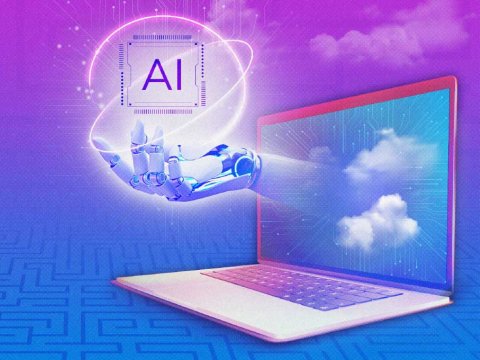Storytelling With Numbers: How Data Literacy Creates Value
As data becomes the most valuable asset, data literacy is the key to unlock its value.
Gartner defines data literacy as the ability to read, write and communicate data while also understanding the context, sources, constructs, analytical methods and techniques that have been applied. The most important part of that definition is the last part: the ability to describe use cases, the application and the resulting value of the data. In the context of employees, data literacy is described as the ability to use technology to drive better business outcomes.
Data literacy impacts much more than the business world. It has a direct impact on our day-to-day lives. One recent example was during the pandemic, as COVID-19 showcased the disparity and equally the importance of data literacy. We all had to read, understand, analyze and filter between the various interpretations of the numbers and figure out what they represented and how the spread of COVID-19 would impact us as individuals and as a society.
Poor data literacy is ranked as the second-largest internal roadblock to the success of the Chief Data Officer’s office, according to the 2021 Gartner Annual CDO Survey. By 2023, data literacy will become essential in driving business value, demonstrated by its formal inclusion in over 80% of data and analytics strategies and change management programs.
Key tenets to understanding data literacy
Consider these four areas of focus as you increase data literacy across your teams:
- Read: Focus on consuming and comprehending data
- Observe: Learn how to work with and interpret data
- Analyze: Learn how to investigate new possibilities using data
- Visualize: Tell your story and share results using data
Why everyone in your organization needs to be data literate
Data literacy isn’t just for data analysts and engineers; it’s for everyone. Inside a data-literate organization, everyone will be capable of uncovering patterns in data. Everyone will be able to utilize critical thinking and ask the right questions to gain the most value from data.
Data-literate employees can more easily generate measurable economic benefits from available data sources to improve things like customer experience and drive business efficiency. At the heart of data literacy is storytelling, as it allows patterns in the data to be analyzed and communicated effectively, helping to drive change. It is the influencer element.
When there’s a high level of data literacy across an entire organization, departments can work together to interpret the data effectively and create value for the company. Teams can explore more ways to use data for solving business challenges. For example, if you’re analyzing sales, you should look at various factors to identify what is and isn’t working. These might include gross bookings, product-level revenue, impact of various marketing campaigns on sales, and influencing factors on churn. Data literacy helps you build a holistic view of your data, rather than just looking at one narrow, isolated slice.
Unfortunately, data literacy isn’t widespread in many organizations. In fact, Accenture recently revealed that only 25% of employees believe they’re prepared to use data effectively, and only 21% are confident in their data literacy skills.
How to increase data literacy
I think organizations can really benefit by increasing the level of data literacy for all employees. The first step to achieving this involves developing a strategy that includes a curriculum and a formal program. Organizations need to take a holistic approach that incorporates the comprehensive education of all employees so that they have a deep understanding of data as it applies to the business.
When it comes to achieving data literacy, language is key, so a business glossary needs to be established. By using the glossary, organizations can ensure everyone has the same understanding of terms, making it easier to tell the story.
One tool or application alone can’t increase data literacy, but technology does have a role to play. Relevant stakeholders must have access to data and the tools they need to interpret it. And the flow of information needs to be unimpeded. Gartner found that data scientists and analysts will lose 60% to 70% of their productive time to finding, preparing, integrating and sharing datasets.
And your journey doesn’t stop with data literacy. To really benefit from data, organizations need to develop a new mindset and cultivate a data solution portfolio. With the volume of data already being generated, it is crucial you ensure your organization is maximizing opportunities.
By proactively trying to increase data literacy across your entire organization, you may find that you can unlock a whole new range of monetization opportunities. I recommend building a data literacy strategy that accounts for ongoing investments in training and technologies that can be accessed across your organization. Your data has lots of stories to tell. I believe that uncovering and sharing them will lead to greater growth and success.

The Future of Collaboration is the End of Email
About the Authors

Chief Architect - Data & AI
Nirmal Ranganathan
Nirmal Ranganathan is the Chief Architect – Data & AI at Rackspace Technology and responsible for technology strategy and roadmap for Rackspace's Public Cloud Data & AI solutions portfolio, working closely with customers, alliances and partners. Nirmal has worked with data over the past 2 decades, solving distributed systems challenges dealing with large volumes of data, being a customer advocate and helping customers solve their data challenges. Nirmal consults with customers around large-scale databases, data processing, data analytics and data warehousing in the cloud, providing solutions for innovative use cases across industries leveraging AI and Machine Learning.
Read more about Nirmal RanganathanRelated Topics



